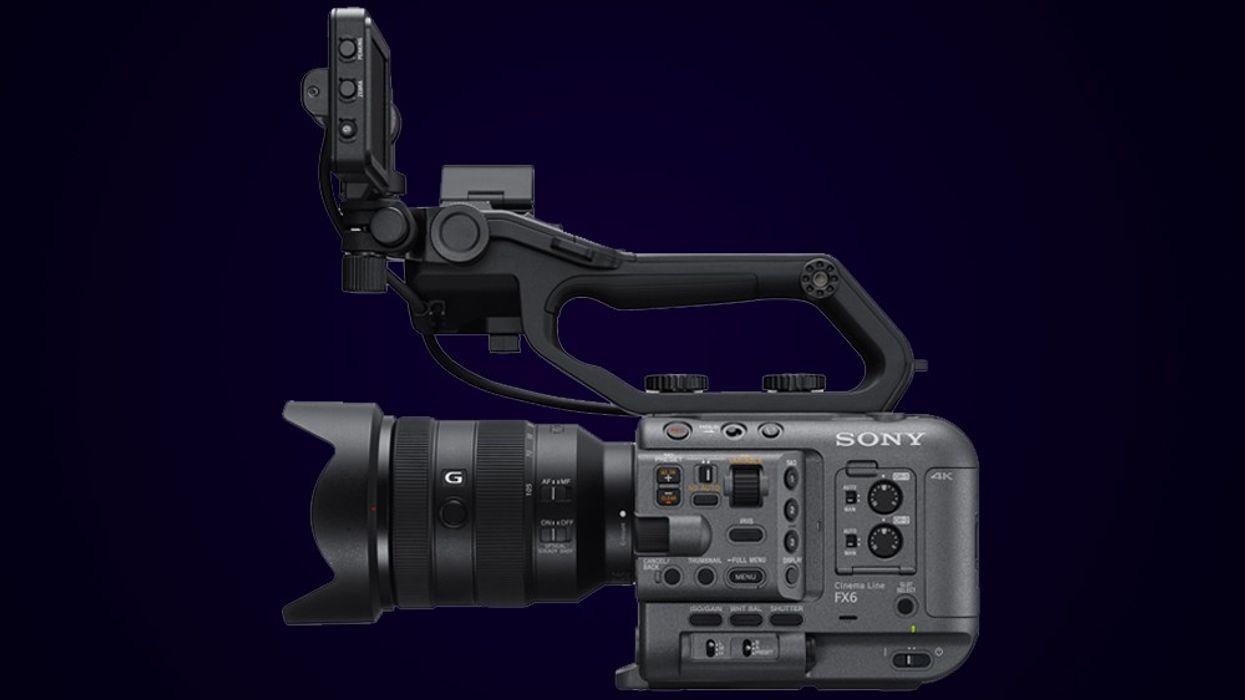Sony Teases New FX6 Cinema Camera
The rumored Sony FX6 camera is alive. Plus, Sony introduces new Cinema Line branding.

We can't say this enough at No Film School: It's a great time to be a filmmaker, content creator, or video enthusiast. You can pick up just about any digital camera and record a quality image at a very affordable price. Go used, you're going to save even more dollars. It's absurd how much functionality and features are available in cameras that fit in the palm of your hand, or better yet, in your back pocket.
Right now the industry is in a roar to perfect full-frame image capture and beyond. Camera manufacturers are at a crossroads where content creators are becoming the future filmmakers. And those filmmakers come from a very different school of thought. One where things like autofocus and in-body image stabilization are looked at as a necessity in why they choose a camera. Productions are cutting budgets. Creators find themselves with less crew and less time. Demands are changing. Now, we're not suggesting things like manual focus will ever die. If anything, you should be perfecting your focusing skills even more as resolution increases.
What we are suggesting is that while there will always be a generation's Kubrick, Nolan, Bigelow, Tarantino, Deakins, Richardson, Morrison, and so on, how those filmmakers create those lasting images will change. It will adopt because the technology that's available will be different. Twenty years from now, digital cameras like the Sony a7S III will be nostalgia, just like how the Sony VX1000 and HDW-F900 are today.
When it comes to the companies creating the cameras we use now, you can see that many are blending traditional cine features with hybrid DSLR/mirrorless technology. Things like RAW shooting, wider gamuts, improved color science, higher resolutions, and better dynamic range are trickling down into mirrorless cameras, while, what would be considered digital cinema cameras, are getting features like autofocus, dual base ISO, and smaller footprints.
According to Sony, the Cinema Line "will extend beyond traditional cinema camera and professional camcorder form factors" and "deliver not only the coveted cinematographic look cultivated through extensive experience in digital cinema production but also the enhanced operability and reliability that meet discerning creators’ various needs."
What that exactly entails for the future on Sony cine cameras, shooters will have to wait. But it suggests that Sony is going to put its best foot forward as each Cinema Line camera will evolve with user feedback. That's a good thing.
So what exactly will be part of the FX6?
While Sony hasn't officially said much, only teasing an image it's definitely the follow up to the PWX-FS5. It will most likely be full-frame and borrow from the FX9 including sensor, color science, video formats, and its autofocus system. In terms of size, it's much smaller than the FX9 and will resemble the form factor of the FS5, which is about half the length. The body will also lose the side operating handle found on the FX9 while still providing cine friendly features.
We wouldn't expect it to record video formats any higher than the FX9. So, 4K UHD at 30fps and full-HD modes at 120fps. Expect 10-bit 4:2:2 XAVC-L. Expect RAW output at 4K UHD at 60fps or higher via SDI or HDMI. Expect S-Cinetone and S-log3 as a recording gamma. Expect built-in variable ND filters, dual card slots, 2 channel XLR audio, and E-mount. Essentially, look at the FX6 as if the FX9 and FS5 had a child. It's not going to make any game-changing headlines, but it's going to be a solid improvement over the FS5.
What Sony is trying to do to is bring cinema features to the masses. The Cinema Line is like a stepping stone where users can interchange between the FX6, FX9, and VENICE and be comfortable using them.
If you haven't realized lately, hybrid cameras are running into a big issue: heat dissipation. Mirrorless cameras shooting oversampled images, high resolution, or high frame rates cannot record for an extended period of time without overheating. Sony knows this. It's why we won't see the Alpha series move on from 4K any time soon. It's what those cameras will be recording at for a long time until the technology advances.
But for creators now, the FX6 is that next step that won't break the bank. Expect Sony to release more news about the camera leading up to release near the end of 2020.
So, what do you think the FX6 will have? Let us know in the comments below.













